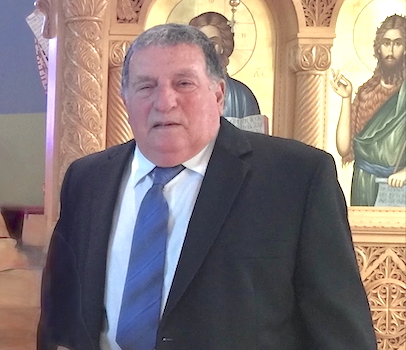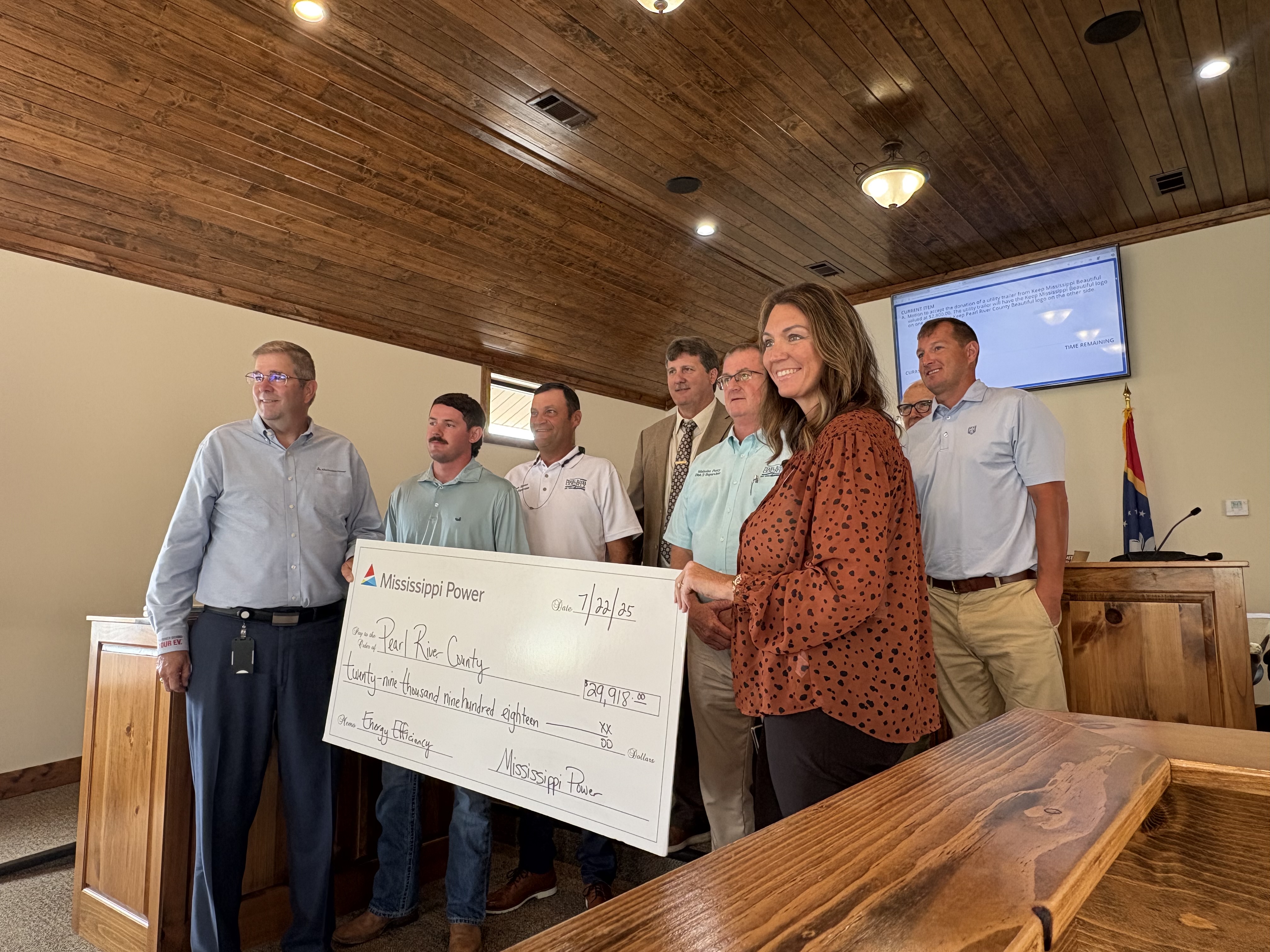Old, abandoned black cemetery center of controversy
Published 1:37 pm Friday, April 8, 2011
A controversy involving an abandoned black cemetery more than 100 years old here has wound up in Pearl River County Justice Court.
Access to the cemetery, in the center of Stone Bridge subdivision, has become the center of the controversy.
The dispute has resulted in the subdivision’s security officer, who also lives in the subdivision, filing an affidavit in Justice Court, charging another Carriere resident with trespassing and desecrating the cemetery.
Trending
The dispute revolves around who has access to the cemetery.
On March 14, Mike Lee, 17 Stone Bridge Road East, signed the affidavit against Michael Holmes, 37, 57 So. Apple South Drive. The affidavit charges Holmes with desecrating the cemetery “by word of mouth,” says Lee.
Holmes claims the charges are false, says he will fight them in court, and wants only to see the cemetery site preserved. Holmes maintains the Stone Bridge Estates Neighborhood Association does not have legal title to the site, and therefore, can’t keep him from visiting the site.
Lee says the association has deeds that show it has undisputed site ownership, that the subdivision, including the roads, is private property, and that four signs warning trespassers they are on private property are posted between the public Anchor Lake Road and the road on which the cemetery is located.
Lee said that as the subdivision’s security officer, he filed the charges, acting on behalf of the association, which, he claims, owns the cemetery site.
A hearing on the charges was originally set for April 13 but was changed to May 4 at 9 a.m. in the Justice Court Courtroom at Millard because Holmes had a conflict with the April 13 date. The case was assigned to Judge James Hal Breland.
Trending
Holmes is a former candidate for the Pearl River County school board, District Two. During last year’s November Special Election, he was one of four candidates. He lost.
Lee said that a number of Stone Bridge residents plan to be at the hearing and will request that the maximum sentence be given to Holmes if he is found guilty. Maximum penalty for the violations is $500 and a year in jail, for each violation.
Holmes maintains he is innocent, that the charges are false and added he plans to plead not guilty at the hearing.
Charges and counter charges have flown over the past several months, with Holmes, admitting he is passionate about what he calls “saving and preserving the cemetery,” and Lee saying there is no disputing that the subdivision homeowners’ association owns the property on which the cemetery rests. “We have the documentation to prove our case,” he said. Holmes maintains the association does not own the site.
Lee says the homeowners’ association is not against preserving the site, but added it has to be done in an orderly manner and through the appropriate legal channels.
Lee maintains the case at one time even went before the board of supervisors and the county board attorney in an executive session, which included the sheriff.
The controversy continued, with Holmes trying to get access to the site anyway, Lee claimed.
Threats of violence have even been hurled, Lee charges.
Lee said Holmes’ won’t work with the homeowners’ association, and that Holmes insists on having free and unencumbered access to the cemetery.
Blacks were originally given access to the site as early as 1906 to perform burials under the name of a fraternity and number, the Household of Ruth (cemetery number) No. 2334, a black women’s fraternal organization, which reportedly was inspired by the Biblical Ruth of the Old Testament. The organization also was active in the pre-Civil War Underground Railroad, according to a series of stories written for the Item by reporter Jana Salmon Mackin in 2001.
The blacks here were connected with the group somehow. Dan F. Smith owned the property and told blacks they could establish a cemetery on the site, but the cemetery site never was deeded to the fraternity group. Smith died in 1943, according to Mackin’s story.
Only a few grave markers remain, overturned off their bases. Each grave marker has engraved on the top of the tombstone a sheaf of wheat to mark the site’s affiliation with the fraternity.
The iron fence that surrounds one large tomb that is caving in was donated by the late Dr. Horn, a widely known physician who practiced medicine in Carriere in the early 1900s. The site is overgrown and deteriorated.
Two overturned tombstones have readable inscriptions: “Patsey Newkirk, Born Aug. 7, 1887, Died Jan. 12, 1910” and “Fanny Weathersby, Died July 14, 1914, 50 years old.”
The person surrounded by the iron fence is interred in a large tomb jutting above ground level and is buried seemingly at the center and top of the hill, so he or she must have been a prominent and important individual in the community.
The cemetery has dwindled to a small site on a hill in a cul-de-sac in the middle of the subdivision. Lee said a road and some houses were built over some grave sites.
The remaining tombstones are turned over. Lee said that vandals have removed parts of the tombstones, whole tombstones and cut or sawed off pieces of Dr. Horn’s donated metal fence, over time.
A number of citizens tried to get a movement underway around 2001 to clean and preserve the site, and got the site surveyed by the State Department of Archives and History, which designated the cemetery as “of historical significance.”
Archive officials said that designation would give supervisors under state law authority to clean and maintain the property, if they chose to, but Mackin quoted then 2001 supervisor board president Robert Thigpen as saying while the county might want to help a volunteer organization salvage the cemetery, the county did not have the money to restore and maintain it. Thus, nothing was done, and the movement dwindled and died.
Lee said the desecration charges against Holmes stemmed from Holmes use of the cemetery as a cache point in a game he plays on-line, called “geocaching,” where participants describe with hints and clues where they bury treasure. Lee said Holmes buried treasure in the cemetery and gave on-line directional hints to the site.
Geocaching is a treasure hunting game where one uses a GPS to hide and seek containers with other participants in the activity.
Lee said that homeowners caught several people participating in the game, leaving the cemetery with shovels and hoes.
Holmes, when asked about the claim, admitted he was a member of the on-line club. However, Holmes claimed he had not desecrated the cemetery in any way. He said that he and his son did bury in the cemetery a match-box size weather-tight match holder, inside of which was a piece of paper to be signed by those who found the item.
“I feel passionate about it, and want to see it saved and preserved. I would not desecrate the graves,” he said.
He said people who have relatives buried there have been denied access.
Lee countered that those who have family members buried there are permitted access to the grave site if and when they contact the homeowners’ association. He said they escorted visitors to make sure they are safe, since the cemetery is located on a wooded steep hill.
He said one unescorted lady exiting the grave site fell in a ditch, but luckily was not seriously hurt. “We have to do what we are doing. The association could be liable for anyone who is hurt or injured up here,” said Lee.
Residents say the cemetery was established, probably in the early 1900s, when Carriere was a booming small village that featured a huge sawmill that ran around-the-clock and that cut the virgin, long-leaf yellow pine timber. At the time Carriere was more populated than Picayune.
However, the population center then shifted back to Picayune when L.O. Crosby, Sr., acquired the Rosa Mill in Picayune around 1915 and began cutting the huge Blodget timber tract that stretched on the western side of the county from Picayune, north, to above Crossroads.
That doomed Carriere’s growth potential and the community dwindled in population.





